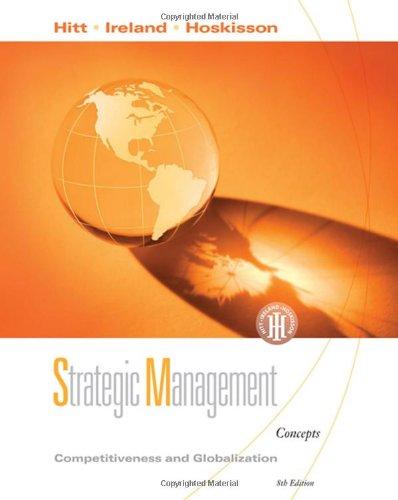The focus of this chapter is on understanding how firm resources and capabilities serve as the cornerstone
Question:
The focus of this chapter is on understanding how firm resources and capabilities serve as the cornerstone for competencies, and, ultimately, a competitive advantage. Strategists have long understood the importance of internal analysis: For example, Porter’s value chain model was introduced in 1985, more than 20 years ago. How, then, can a large number of prominent firms create strategies while apparently disregarding the importance of internal analysis?
The late 1990s saw the launch of thousands of Internet start-ups, often supported by venture capital. These new businesses were heralded as part of the “new economy” and were characterized as having a superior business model compared to the models being used by traditional bricks-and-mortar firms. The collapse of the dot.com bubble had global economic ramifications. Some of the more prominent e-business failures included:
As a group, select a failed dot.com business. You may choose one of the companies from the preceding list, or another dot.com that you identify on your own. Using library and Internet resources, prepare a brief PowerPoint presentation that covers these questions:
• How did the company describe its value proposition (i.e., how did the firm plan to create value for its customers)?
• Describe the resources, capabilities, and competencies that supported this value proposition.
• Why do you think the firm failed? Was it a poor concept, or a sound concept that was not well executed? Apply the concepts of value, rarity, imitation, and sustainability when preparing your answer.
• Are any other firms presently using a similar approach to create value for their customers? If so, what makes them different from the failed company that you studied?
Step by Step Answer:

Strategic Management Competitiveness And Globalization Concepts
ISBN: 9780324581126
8th Edition
Authors: Michael A. Hitt, R. Duane Ireland, Robert E. Hoskisson





